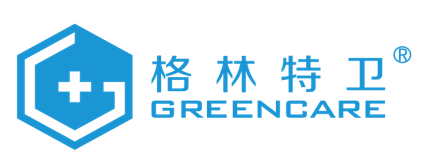The Importance of Protective Clothing in the Pharmaceutical Industry
In the fast-paced world of pharmaceuticals, safety is of utmost importance. One crucial aspect of maintaining a safe working environment is the use of protective clothing. Protective clothing acts as a barrier between the wearer and potential hazards, ensuring that employees are shielded from harm. In this article, we will explore the various aspects of protective clothing in the pharmaceutical industry, including its purpose, types, and key features.
Why is Protective Clothing Necessary?
Pharmaceutical manufacturing involves handling a wide range of potentially hazardous substances, including chemicals, powders, and microorganisms. These substances can pose serious risks to human health if proper precautions are not taken. Protective clothing serves as a vital line of defense against these hazards, minimizing the chance of exposure and preventing accidents or injuries.
Types of Protective Clothing in the Pharmaceutical Industry
Protective clothing in the pharmaceutical industry comes in various forms, each designed to address specific risks. Here are some common types:
1. Disposable Coveralls
Disposable coveralls are lightweight, single-use garments that provide full-body protection. They are typically made of non-woven fabrics and are designed to be worn over regular clothing. Disposable coveralls are an economical choice for tasks that involve minimal exposure to hazardous substances.
2. Chemical-Resistant Gloves
Chemical-resistant gloves are essential for protecting hands from direct contact with hazardous chemicals. These gloves are made from specialized materials that can withstand the corrosive effects of various substances commonly found in pharmaceutical manufacturing.
3. Face Shields
Face shields are transparent protective barriers that shield the face from splashes, sprays, and other forms of airborne contaminants. They are commonly used in conjunction with other protective equipment, such as masks and goggles, to provide comprehensive facial protection.
4. Respiratory Protection
Respiratory protection is crucial when working with volatile chemicals or substances that may release harmful fumes or particles. Respirators, such as N95 masks, help filter out airborne contaminants, ensuring that employees breathe clean air.
5. Cleanroom Suits
Cleanroom suits are specialized garments designed to maintain a controlled environment free from contaminants. They are commonly used in pharmaceutical manufacturing facilities where maintaining strict hygiene and sterility is essential.
Key Features of Protective Clothing
Protective clothing used in the pharmaceutical industry typically possesses specific features to enhance its effectiveness. Here are some key features to look for:
1. Resistance to Chemicals
Protective clothing should be resistant to a wide range of chemicals commonly encountered in pharmaceutical manufacturing. This ensures that the clothing remains intact and does not allow chemicals to penetrate through to the wearer's skin.
2. Breathability
While protective clothing needs to provide a high level of protection, it is also essential for it to be breathable. Breathable materials allow heat and moisture to escape, preventing discomfort and ensuring the wearer remains cool and dry.
3. Comfort and Flexibility
Protective clothing should not restrict the wearer's movement or cause discomfort during extended periods of use. It should be designed with ergonomic considerations to allow freedom of movement and flexibility.
4. Easy Donning and Doffing
The process of putting on and taking off protective clothing should be simple and efficient. This reduces the risk of contamination or accidental exposure when changing garments.
5. Durability
Protective clothing should be able to withstand the rigors of daily use without compromising its protective properties. Durable materials and construction ensure that the clothing remains effective for an extended period.
In Conclusion
Protective clothing plays a vital role in maintaining a safe and healthy working environment in the pharmaceutical industry. By providing a barrier against potential hazards, it helps protect employees from exposure to harmful substances. Understanding the different types of protective clothing and their key features is essential for ensuring proper protection and minimizing the risk of accidents or injuries.

